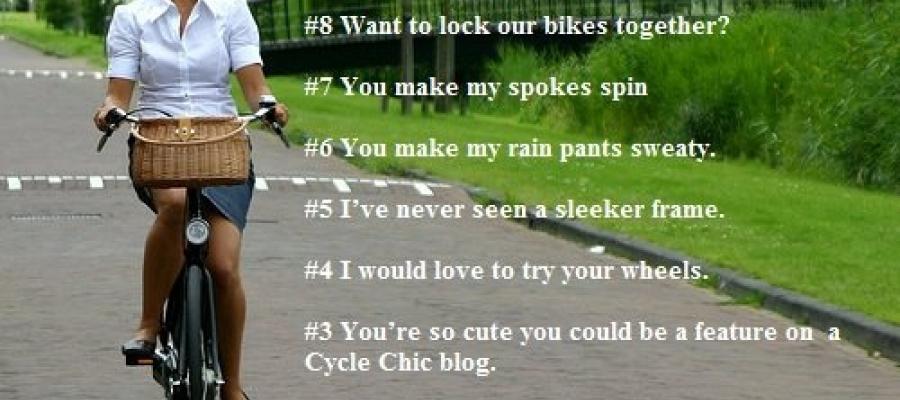When I first became a dedicated cyclist, about four decades ago, it could have shared a motto with the fashion industry: Thin is “in.” Even touring bikes had tires, and were constructed from parts, that are positively svelte.
Cycling was also like fashion because thin and rich went together. The most expensive bikes were thinner and lighter than the rest: You could get a Schwinn baloon-tired bike for a song, or less.
All of that began to change with the introduction of frames made from large-diameter aluminum tubing—and mountain bikes. Road racing bikes still had skinny tires, but the development of mountain bikes showed many people the practicality of wider tires.
About a decade ago, “fat tire,” or simply “fat”bikes appeared. They looked like downhill mountain bikes on steroids. While they first became popular as “snow” bikes or the two-wheeled equivalents of Hummers. I’ve seen some here in New York, though none in hipster or affluent neighborhoods. And I have seen fewer of them over the past few years.
It seems that I’ve been witnessing a larger trend, according to Jeff Barber in Singletrack. Apparently, the fat-bike trend reached its peak around 2015, at least if we judge it by the number of models offered by manufacturers. According to Barber’s article, half as many models are available this year, and a few companies have stopped making them.
One thing I have noticed is that here in New York City, the popularity of fat bikes seems to have fallen off as motorized and electric bikes have become more common. Just as I don’t recall seeing fat bikes in Greenpoint or other self-consciously hip precincts, I don’t see residents of such neighborhoods on e- or motorized bikes. In such places, if you see someone on a bike with an electric or mechanical
assist, he (yes, he’s almost invariably male—and an immigrant) is probably delivering dinner to someone who doesn’t ride an e-bike, but might ride a “fixie” to the N.Y. Waterways ferry.
I wonder whether the fall of the fat tire correlates with the rise of ebikes in other parts of the country. Or is thin “in” again?
Cycling was also like fashion because thin and rich went together. The most expensive bikes were thinner and lighter than the rest: You could get a Schwinn baloon-tired bike for a song, or less.
All of that began to change with the introduction of frames made from large-diameter aluminum tubing—and mountain bikes. Road racing bikes still had skinny tires, but the development of mountain bikes showed many people the practicality of wider tires.
About a decade ago, “fat tire,” or simply “fat”bikes appeared. They looked like downhill mountain bikes on steroids. While they first became popular as “snow” bikes or the two-wheeled equivalents of Hummers. I’ve seen some here in New York, though none in hipster or affluent neighborhoods. And I have seen fewer of them over the past few years.
It seems that I’ve been witnessing a larger trend, according to Jeff Barber in Singletrack. Apparently, the fat-bike trend reached its peak around 2015, at least if we judge it by the number of models offered by manufacturers. According to Barber’s article, half as many models are available this year, and a few companies have stopped making them.
One thing I have noticed is that here in New York City, the popularity of fat bikes seems to have fallen off as motorized and electric bikes have become more common. Just as I don’t recall seeing fat bikes in Greenpoint or other self-consciously hip precincts, I don’t see residents of such neighborhoods on e- or motorized bikes. In such places, if you see someone on a bike with an electric or mechanical
assist, he (yes, he’s almost invariably male—and an immigrant) is probably delivering dinner to someone who doesn’t ride an e-bike, but might ride a “fixie” to the N.Y. Waterways ferry.
I wonder whether the fall of the fat tire correlates with the rise of ebikes in other parts of the country. Or is thin “in” again?





















